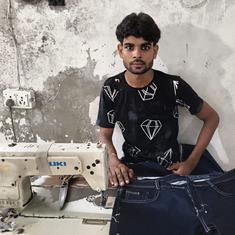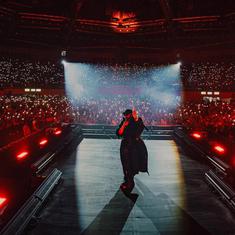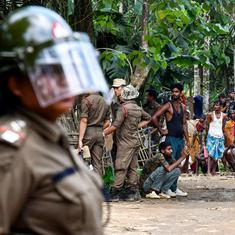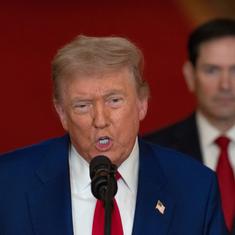In a belated reaction to widespread criticism for its use of shotguns that injured hundreds of Kashmiri protestors during this summer’s unrest, the Central Reserve Police Force announced on Monday that it would attach deflectors to these weapons. These devices, it claimed, would allow the pellets they fire to be aimed lower and would minimise upper body injuries.
Approximately 4,500 people were reported to have been injured by these pump-action shotguns – euphemistically called pellet guns by the authorities – by October, according to an independent team constituted by the People’s Union for Civil Liberties. When it released its report in October, the team also estimated that another 1,000 people had been injured in the eyes by these pellets, with 300 of them being left blind.
However, the CRPF announcement has not inspired much confidence in the Valley. Many said that they doubt that the modification will make any real difference on the streets.
“It’s the policy behind the gun that is important,” said Mannan Bukhari, who heads the human rights cell of the Mirwaiz Umar Farooq-led separatist Hurriyat faction. “How they [the state] are treating Kashmir: where right to expression is choked.”
According to social activist Touseef Raina, shotguns have become “a symbol of the government’s insensitivity” and their continued use is counterproductive. “When they are not withdrawn even after so many young Kashmiris have been blinded and horribly scarred, people get the impression that the government just does not care whether Kashmiris live or die,” he said.
Practical solution?
The use of shotguns against protestors in Kashmir in the wake of the killing of Hizbul Mujahideen commander Burhan Wani in an encounter in July had led to a huge outcry. These weapons spray crowds with metal pellets. The outrage prompted the government in September to promise it would consider less lethal alternatives for crowd control – including chilli-based PAVA (pelargonic acid vanillylamide) shells. Union Home Minister Rajnath Singh had said the guns would be used only in the “rarest of rare case”. But months later, what has come about is a slight modification of the same weapon.
Rajesh Yadav, a Central Reserve Police Force commandant in Srinagar, said that troops had been directed to aim at the feet of protestors, “in a manner that the pellets do not go upwards towards the face”. This would ensure that the pellets do not hit protestors above the abdomen.
Yadav reported positive results from the trial of the new samples of pellet guns with deflectors attached to their muzzles. But he was quick to add a word of caution: “What happens on the ground is totally different as the situation is not as idle as in the firing range.”
While the deflectors are intended to direct the spray of pellets towards the ground, there is still the danger that projectiles could ricochet off hard surfaces, such as paved roads, and hit people who have ducked or are close to the ground. Yadav admitted to the possibility of ricocheting projectiles in urban areas, but ruled it out “in rural areas or the countryside”, where there are softer surfaces.

Moving targets
Another aspect to the impact of pellet guns are the conditions under which the weapons are discharged. “During pelting, the stone-pelters keep moving left and right and the person who is using the pump action gun is also not stable,” said Yadav. “It is not like range firing practice. He has to take cover, safeguard himself from the stones and in that moment use the weapon.”
But he added that even in such a situation, “when there is stone-pelting and the [personnel in possession of the weapon] is moving”, the deflector would minimise the chance of the pellets hitting people in their upper bodies.
“The intention is not to hurt any youngster, the intention is to disperse the mob,” he said. “The intention is to keep them at a distance so that the stones [hurled by protestors] do not harm the jawans on duty or their vehicles.” Like Home Minister Rajnath Singh, the officer, too, said that shotguns will be used only in volatile situations that endanger lives. “As the law and order SOP [standard operating procedure] says, you can use firearms also but the point is we are not using firearms,” he said. “We want to use pump action as a last resort only.”
Too little, too late
However, these reassurances, however, have cut little ice with critics. Aijaz Ashraf Wani, assistant professor of political science at the University of Kashmir, said the use of the shotgun has left a deep impression on the psyche of Kashmiris and these measures are “too little, too late” to change public opinion. “This weapon has taken out whatever legitimacy, if any, the government had,” he said.
Wani explained: “All through, government and other agencies have been claiming that this is a non-lethal weapon and is used only in extreme cases. Later, we were told that personnel who handle these weapons were not trained. What this modified weapon is going to do, only time will tell. But at present, it seems it is only an eyewash.”
Wani said the resentment in Kashmir is “too deep to be contained by banning pellet guns or removing a law” – a reference to the Armed Forces (Special Powers) Act that gives security personnel in conflict areas powers to shoot and kill with impunity.
“When the home minister visited Kashmir a fortnight after Burhan was killed, Kashmiris got the impression that pellet guns would be withdrawn,” he noted. “That they have refused to do it has terribly undermined the credibility of the government.”
Mannan Bukhari of the Hurriyat emphasised that the use of shotguns as a method of crowd control is illegal. “According to international law, for the sake of argument, if someone is protesting and it is not justified, there is a law,” he said. “There is the Criminal Procedure Code, and SOPs. You have to use minimum force. Civilised societies are contemplating whether to use water cannons or not. How can we justify the use of pellet guns here when its lethality has been established?”










